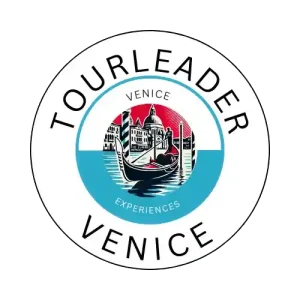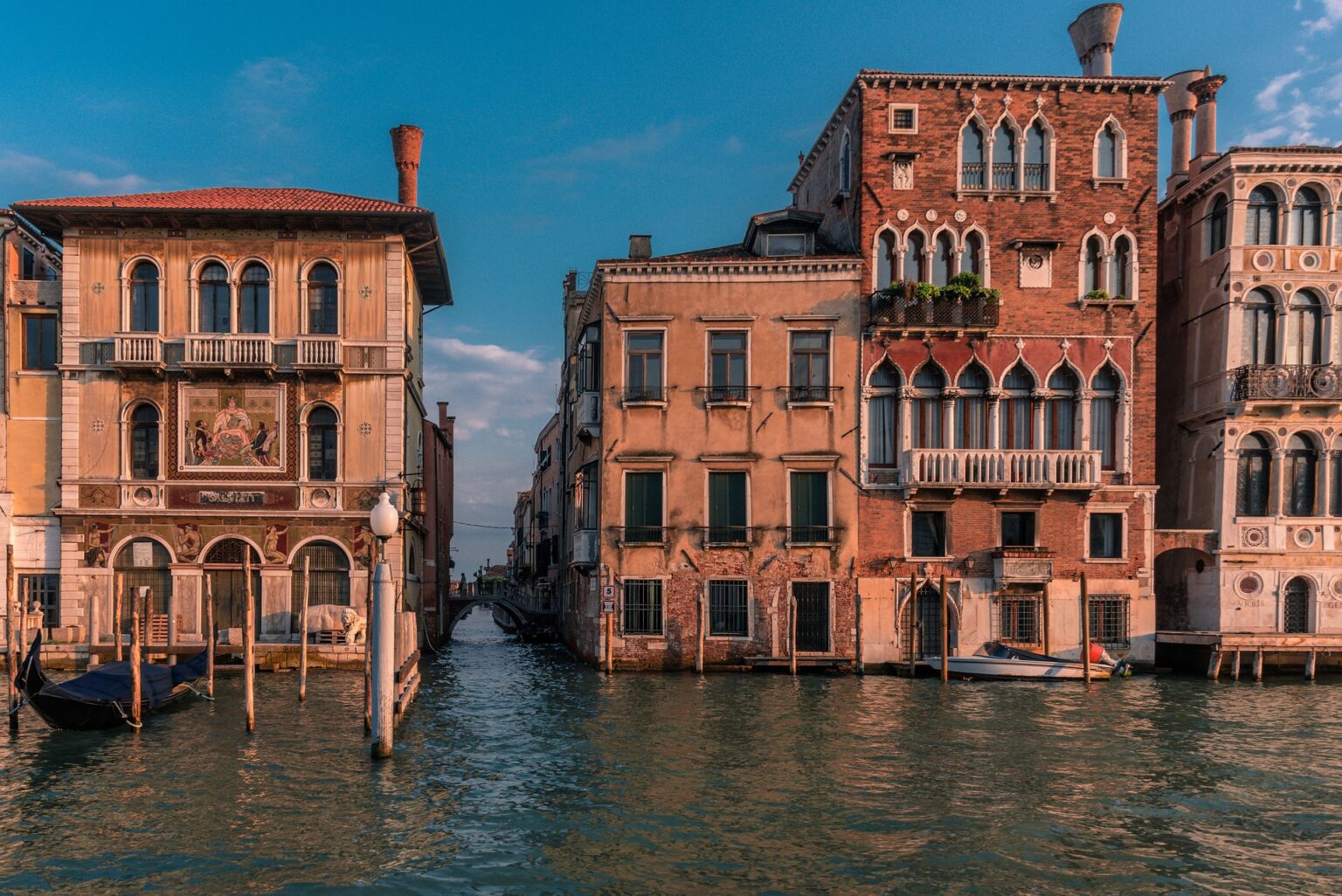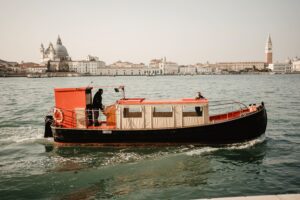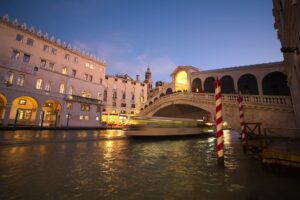Venice 360°: The Complete, Friendly Planning Guide (with Local Tips, Tools & Smart Links)
Planning Venice can feel like juggling gondolas — gorgeous, a bit wobbly, and absolutely worth it. This all-in-one guide pulls together the essentials (best time to visit, what to pack, how to move around, where to stay, and what to book) plus insider resources from real locals.
📅 Best Time to Visit (Month-by-Month)
🚤 Getting Around Venice (Vaporetto, Walking & Boats)
🏨 Where to Stay: Neighborhood Guide
1) Choose Your Dates (Crowds, Weather, Events)
Venice is stunning year-round, but each season has a mood. To fine-tune your timing, use this local breakdown:
- Spring (Mar–May): Mild weather, blossoming gardens, fewer crowds than summer. Great for long walks and photography. How to avoid the crowds
- Summer (Jun–Aug): Long days, busy canals, peak prices. Plan early entries and late walks. Summer vs Winter
- Autumn (Sep–Nov): Softer light, cultural calendar in full swing, and fewer day-trippers after September. Venice Film Festival
- Winter (Dec–Feb): Misty canals, quiet streets, lower hotel rates, and magical Carnival. All about Carnival
Plan with this month-by-month local guide and check the new Venice Day-Trip Entry Fee rules (2025).
2) Pick the Right Neighborhood (for Your Style)
Venice is a cluster of distinct sestieri (districts). Match your vibe:
- San Marco: Icon central (Basilica, Doge’s Palace). Best if you want to be in the thick of it.
- Cannaregio: Authentic, local energy, great for food lovers. Off-the-beaten-path ideas
- Dorsoduro: Art hub (Accademia, Guggenheim), elegant and calm at night. Top tours nearby
- Castello: Local life, gardens, and spacious promenades. Sant’Elena & San Pietro
- Giudecca: Quiet, panoramic skyline views, easy vaporetto links. Guide to Giudecca
🔎 Compare Venice Neighborhoods
💎 Best Luxury Hotels (Local Picks)
3) Build a Smart Itinerary (1–3 Days & Beyond)
Short stay or slow travel? Use these ready-to-go frameworks:
Love art? Pair Accademia with the Peggy Guggenheim Collection. Into history? Explore the Doge’s Palace and the Rialto Bridge.
4) Moving Around: Vaporetto, Walking & Boats
Venice runs on feet and boats — blissfully car-free. Master the basics:
- Vaporetto (waterbus): Cheapest way to cruise the Grand Canal and reach islands. Vaporetto 101 • How to use the Vaporetto
- Water Taxi: Fast, private, and photogenic (especially for arrivals). Water Taxi vs Vaporetto
- On Foot: Venice is walkable — pack good shoes. Walkability guide
🚤 Learn All Your Transport Options
🛥️ Get Your Vaporetto Pass & Tips
5) Arriving Smoothly (Airports & Transfers)
Flying in? You’ll land at VCE (Marco Polo) or TSF (Treviso). These guides make arrivals painless:
- Marco Polo to Venice: Step-by-Step
- Marco Polo vs Treviso — Which to Choose?
- Airport → Hotel Options (All Budgets)
- Private Boat Transfer (Train Station → Hotel)
6) What to Book in Advance (and Why)
- Major museums & icons: Accademia, Peggy Guggenheim, Doge’s Palace
- Vaporetto passes: If you’ll use boats multiple times/day (Grand Canal + islands), passes save time and money. Vaporetto pass guide
- Private/Small-group tours: Sell out in peak months. Best tours & experiences
🎫 Accademia: What to See & How to Plan
🛥️ Vaporetto Pass: Routes & Validation
7) What to Pack (Season by Season)
- Shoes: Cushioned, grippy soles for bridges & stones.
- Layers: Spring/fall can shift from sun to breeze.
- Summer kit: Hat, sunscreen, refillable bottle.
- Wet weather: Compact umbrella, light rain shell. For winter/high tide, waterproof boots help.
- Modesty: Shoulders/knees covered for churches.
- Daypack: Hands free for steps and boarding boats.
Steal a local’s suitcase: Ultimate Venice Packing List
8) High Tide (Acqua Alta): What to Expect
Most common Oct–Dec (and sometimes in spring). It’s usually short-lived and manageable with raised walkways. Track forecasts, wear waterproof footwear, and follow signage.
- Complete Guide to Acqua Alta
- Safety & Walking During High Tide
- Climate & the MOSE System (Explained)
9) Eat Like a Venetian (Cicchetti to Seafood)
Start with cicchetti (Venetian tapas) and a glass of local wine in a bàcaro. Book dinners earlier than you think (especially Fri–Sun).
- Cicchetti 101: What to Order & Where
- Top Cicchetti & Wine Bars
- What Venice Is Known For (Dishes Guide)
- Rialto & Local Markets Guide
- Bellini → Spritz: Cocktail Trail
10) Luggage, Costs & Practical Stuff
- Luggage storage: Avoid hauling bags over bridges. Where to Store Luggage
- Budgeting: What Venice really costs (and how to save smart). Cost Guide
- Entry fee (day-trippers): Check dates and rules. Entry Fee 2025
- Safety: Venice is safe, but use common sense in crowds. Safety Overview
11) Read Before You Go (Books that Set the Mood)
Prefer screens? Try these Venice film, music video, and documentary roundups: Movies Shot in Venice • Music Videos in Venice • Da Mosto Documentary
12) Handy Apps & Tools (Local-Approved)
- Vaporetto help & navigation: How Not to Get Lost
- High tide know-how: Understanding Acqua Alta
13) Best Districts to Sleep (Quick Picks)
- San Marco: For first-timers who want icons at their doorstep.
- Cannaregio: Local flavor, great bàcari, easy access to train station.
- Dorsoduro: Art, calm evenings, gorgeous canal walks.
- Castello: Space to breathe, lagoon views, Biennale gardens.
- Giudecca: Quiet island vibes with postcard sunsets.
Deep dive: Where to Stay in Venice (Local Guide)
Bonus: Day Trips, Kids, Rain Plans & Hidden Corners
- Best Day Trips (Murano, Burano, Prosecco Hills)
- Venice with Kids
- Venice in the Rain (Cozy Ideas)
- Hidden Gems & Off-the-Path Spots
Local-Style Tips for Guests (Save Time, Walk Happier)
- Validate vaporetto tickets on the dock before boarding. Fines are real. Vaporetto guide
- Travel light. Bridges + steps + rolling suitcases = drama. Use luggage storage.
- Eat where Venetians eat. Browse local picks and cicchetti bars.
- Book key sights. It saves hours in peak season. Start with Accademia & the Doge’s Palace.
- Check tide forecasts Oct–Dec; carry waterproof footwear just in case. Acqua alta guide
- Slow down. Venice rewards wanderers. Give yourself an hour to “get lost” daily. Don’t-get-lost tips
Ready to Plan Like a Pro?
🛥️ Get Your Vaporetto Pass Tips
Need a hand tailoring this to your dates, interests, and pace? Explore our curated experiences here: The Best Tours & Experiences in Venice.
FAQs About Planning a Trip to Venice
What’s the best time of year to visit Venice?
Each season has its charm. Spring and autumn offer the best balance of light, calm canals, and comfortable weather. Summer is lively but crowded, while winter brings misty beauty and Carnival magic. Check our Month-by-Month Venice Guide for timing tips, weather insights, and local events to match your travel style.
How do I get around Venice without getting lost?
enice is a car-free city, best explored on foot and by boat. Use vaporetti (public waterbuses) for longer routes or island hopping — especially with a Vaporetto Pass. For comfort and flexibility, book a Private Grand Canal Boat Tour or combine walking and boating on our Off-the-Beaten-Path Orientation Tour.
What should I book in advance for Venice?
Reserve your skip-the-line tickets for the Doge’s Palace, St. Mark’s Basilica, and major museums like the Peggy Guggenheim Collection to save hours in queues. If you want a personal introduction to the city, our Private Venice Walking Tour and Cicchetti & Wine Experience are local favorites that fill up quickly — especially from April through October.







